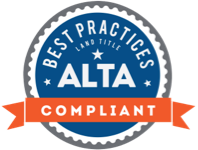By Peter M. Carrozzo, Chief Counsel Cornerstone Land Abstract
When you attempt to sell your home, the existence of an old mortgage on a property often leads to additional red tape. In Part I of our blog, we delved into this discussion. Part II takes a deeper look at this challenge and focuses on solutions if you are ever faced with this issue.
The responsibility of remedying these mortgage issues frequently falls on our clearance counsels and officers. Our methods vary, depending on the situation. The scenario recited above of a prior mortgage (i.e., a mortgage on a prior owner) is the simplest one to resolve, provided the owners purchased title insurance at their closing. In 2003, a group of title underwriters (underwriters are the actual insurers of title policies issued by title agents) met to establish guidelines for expedited clearance of certain title issues. The Mutual Indemnification Agreement was established as a result of these meetings. So, in the case of an open mortgage on a prior owner in the amount of $500,000.00 or less, under the Mutual Indemnification Agreement, receipt of the insurance policy from the title company that insured a prior transaction will allow the new title company to insure the premises notwithstanding the open mortgage.
“The responsibility of remedying these mortgage issues frequently falls on our clearance counsels and officers. Our methods vary, depending on the situation.”
What does an owner do in the event they cannot locate their title policy? This usually occurs with someone who purchased premises in the 1970s or prior. In addition to the Mutual Indemnification Agreement, the New York State Land Title Association created “Recommended Practices” that set forth “customary guidelines” for clearing common title defects such as prior owner mortgages. One such recommended practice concerns “Small Ancient Mortgages.” This practice allows an ancient mortgage affidavit executed by the owner of the premises to clear a prior mortgage provided:
The mortgage was held by an institutional lender
The mortgage is $50,000.00 or less
The mortgage matured more than twelve years ago or has been recorded for more than 30 years
The mortgage has not been assigned or consolidated within twelve years
There has been no payment or demand for payment of principal or interest for twelve years
Neither the owner nor an ancestor was the original borrower.
Sometimes, clients or their attorneys attempt to apply this rule to clear mortgages that do not meet all of the requirements. Privity between the original borrower and the current owner creates the biggest obstacle. If there is any familial relationship between them, the ancient mortgage affidavit will not clear title. Also, the due date of the mortgage must be established, and sufficient amount of time must have passed. If a mortgage was taken out in 1990 with a fifteen-year amortization, the twelve year look back begins in 2005. In the event it is a thirty-year amortization the twelve year look back does not begin until 2020.
When the open mortgage is against the current owner, it become more complicated. Hopefully, the owner will find documentation to establish that the mortgage has been paid off, such as a paid in full letter, a payoff letter with a copy of a check for payment, or a HUD-1 statement at a closing where the old mortgage was paid off. With that evidence a title company may accept a sum of money in escrow to cover the legal expenses of brining an action in court to remove an ancient mortgage. These actions are covered under the Real Property Actions and Proceedings Law Section 1931. This statute allows a borrower to present a petition to a court describing the mortgage and alleging it has been paid off, or provide proof that the lenders have been deceased for more than five years, or if the lender is a corporation, that it has ceased to exist or do business for more than five years.
“If you have any questions about a mortgage on your property, please contact one of our clearance counsels for a free consultation.”
Efforts must be made to locate the original lender and obtain a satisfaction. This is always a smart first step since you may be successful in finding the lender (or the successor) and request a satisfaction. Additionally, the process of trying to locate the lender (called the due diligence process) will be required by a court so you can serve the lender or prove you took all reasonable efforts to resolve this through the lender. If you are unable to locate the lender, the court will allow your attorney to publish in a newspaper located in the county of the premises. With that method of service complete, a judge will sign an order and a certified copy of said order can be recorded to satisfy the mortgage. One other possible wrinkle occurs when the lender is a private individual which will require a different due diligence search than for a lender. If the lender’s name is common (i.e. Smith or Anderson) the process is further complicated.
All of these procedures take time and, inevitably, lead to delays in closings. With tight time constraints created by property flips (i.e. sellers sell their home and with the proceeds purchase a new home) and lock in expirations for buyers, homeowners should take steps to remove these potential complications. If you are preparing to list your property, it would be wise to find all of your old paperwork from your purchase and any refinances. This information will expedite, and in some cases resolve, the issue of a prior mortgage. A smart step to take is to run a preliminary title reports to see if there are encumbrances on your home before listing a property.
Let Cornerstone Land Abstract assist you in this process. If you have any questions about a mortgage on your property, please contact one of our clearance counsels for a free consultation.




